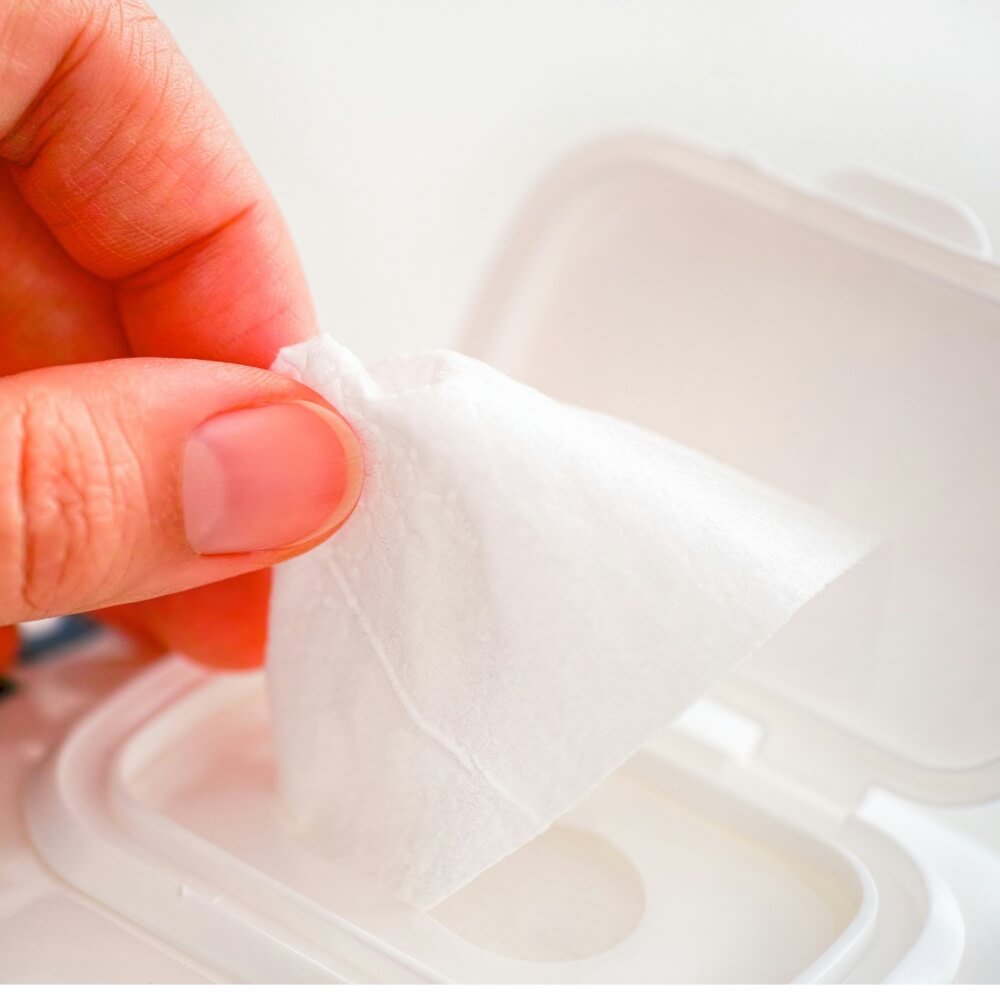In today’s eco-conscious world, understanding the labels on products we use daily, like wipes, is crucial. Biodegradable and compostable wipes are touted as environmentally friendly alternatives to traditional wipes, but what does each label really mean? This article breaks down the definitions, differences, and environmental impacts of biodegradable and compostable wipes, providing you with the necessary information to make informed, sustainable choices.
Understanding Biodegradable Wipes
Biodegradable wipes are designed to break down naturally with the help of bacteria and fungi. Unlike regular wipes, which can take decades to decompose, biodegradable wipes typically decompose within several years under the right environmental conditions. However, the term “biodegradable” can be misleading as there is no strict regulation on how quickly these products must break down. Consumers should look for specifics about the wipe’s composition and the environmental conditions required for proper breakdown.
How Biodegradable Wipes Break Down
Biodegradable wipes require specific conditions to decompose, such as the presence of microorganisms, moisture, and sometimes oxygen. The breakdown process converts the wipes into carbon dioxide, water, and biomass. However, if disposed of in an anaerobic environment like a landfill, where oxygen is scarce, even biodegradable wipes can persist for a long time. Therefore, understanding the disposal route is as critical as the wipe’s biodegradable nature.
Understanding Compostable Wipes
Compostable wipes are a step ahead in terms of environmental responsibility. These wipes not only break down but do so in a way that contributes positively to the compost, turning into nutrient-rich humus. The distinction here is that compostable wipes must meet certain standards, such as ASTM D6400 in the United States, which require the product to break down in a composting facility within a specific timeframe, usually 90 days.
How Compostable Wipes Break Down
Compostable wipes break down under the conditions of industrial composting facilities, which provide the necessary microbial activity, heat, and moisture to ensure complete decomposition. Once broken down, these wipes leave no harmful residues, instead contributing to the creation of compost that can help enhance soil health. This feature makes compostable wipes not only a green choice but a proactive one in contributing to environmental sustainability.
Key Differences Between Biodegradable & Compostable Wipes
The main difference between biodegradable and compostable wipes lies in their environmental impact and the specific conditions under which they decompose. While biodegradable wipes degrade over time into simpler compounds, compostable wipes do so more efficiently and yield a product beneficial to the earth. Moreover, the regulatory standards for compostable wipes are stricter, ensuring that they offer a tangible benefit to the composting process and ultimately, to soil health.
Breakdown Process
The breakdown process for each type of wipe is governed by different factors. Biodegradable wipes often require longer periods and specific conditions, which are not guaranteed in typical disposal scenarios like landfills. On the other hand, compostable wipes are designed to decompose within a controlled environment in a relatively short time, with the assurance that they turn into useful compost without leaving toxic residue.
Environmental Impact
Compostable wipes generally have a lower environmental impact compared to biodegradable ones, especially when disposed of properly in composting facilities. They support the circular economy by returning valuable nutrients to the soil. However, the environmental advantage of compostable wipes hinges on the availability of local composting facilities, which can limit their effectiveness if such facilities are absent.
Appropriate Disposal Methods
Understanding the appropriate disposal methods for each type of wipe is essential for maximizing their environmental benefits. Biodegradable wipes should ideally be disposed of in conditions that facilitate aerobic decomposition, such as a well-managed landfill that regularly turns over the waste. However, this is not always guaranteed. Compostable wipes, in contrast, should be disposed of at a composting facility that meets the necessary standards to ensure they break down correctly and contribute to compost. It’s crucial for consumers to be aware of their local waste management infrastructure to make the best choice.
The Impact on the Environment
The long-term effects of both biodegradable and compostable wipes on the environment depend significantly on consumer behavior and local waste management practices. Here, we explore how each type of wipe impacts ecosystems and what that means for our planet.
Effects of Biodegradable Wipes on Ecosystems
While biodegradable wipes offer a reduction in persistence compared to non-degradable options, their impact on ecosystems can still be significant. Improper disposal can lead to wipes accumulating in environments, such as oceans or other water bodies, where they pose a threat to wildlife and ecosystems. Although they eventually break down, the process can be slow and release methane, a potent greenhouse gas, if it occurs in an anaerobic environment.
Effects of Compostable Wipes on Ecosystems
Compostable wipes are designed to minimize environmental impact, provided they are disposed of correctly. When integrated into industrial composting processes, these wipes contribute to the production of nutrient-rich compost that benefits agricultural lands and reduces the need for chemical fertilizers. However, if compostable wipes are not disposed of in the right setting, they, too, can contribute to pollution and environmental degradation.
Consumer Guidance
Making informed choices about which type of wipe to use can significantly impact environmental sustainability. Here’s how consumers can navigate their options.
How to Choose the Right Wipes
Consumers should consider both product labels and local disposal capabilities when choosing wipes. If your local community has access to industrial composting facilities, compostable wipes are the preferable option. For those without such access, biodegradable wipes are a better choice than non-degradable alternatives, though the environmental benefits will be less pronounced.
What to Look for on Labels
Labels can often be confusing or even misleading. Look for specific certifications like the Biodegradable Products Institute (BPI) for biodegradable wipes or TUV Austria (OK Compost) for compostable ones. These certifications ensure that the wipes meet stringent environmental standards and offer transparency about the product’s actual impact.
Industry Standards and Certifications
Standards and certifications play a crucial role in ensuring that environmental claims about wipes are valid and verifiable. Understanding these can help consumers make more environmentally responsible choices.
Overview of Relevant Certifications
Certifications such as ASTM D6400 (for compostable products in the U.S.) and EN 13432 (in Europe) are crucial for verifying the compostability of wipes. These standards ensure that the products are capable of breaking down in a composting facility without leaving harmful residues. For biodegradable products, certifications like ASTM D5338 (for aerobic biodegradation) provide similar assurances.
How Certifications Influence Product Quality
Products that meet these stringent standards are generally of higher quality in terms of environmental sustainability. Certifications ensure that the products perform as expected in real-world conditions, providing reassurance to environmentally conscious consumers.
Real-world Application and Case Studies
Examining real-world applications and case studies of both biodegradable and compostable wipes can provide insights into their practical impacts and benefits.
Case Studies of Successful Implementations
Case studies from around the world show the benefits of using compostable and biodegradable wipes. For example, a city in Sweden successfully transitioned to using compostable wipes for municipal cleaning services, significantly reducing landfill waste and enhancing local compost quality.
Lessons Learned from Different Regions
Different regions offer valuable lessons on the implementation of eco-friendly wipes. In areas with robust composting facilities, compostable wipes have demonstrated a clear environmental benefit. Conversely, regions lacking these facilities have found limited benefits from biodegradable wipes due to inadequate disposal practices.
The journey from conventional wipes to more sustainable alternatives like biodegradable and compostable wipes marks a significant step forward in reducing our environmental footprint. By understanding the key differences and impacts of each type, consumers can make informed choices that align with their local environmental infrastructure and personal values.
Choosing the right type of wipe—whether biodegradable or compostable—requires not only an understanding of the product’s properties but also a consideration of local disposal options. For those in regions with accessible composting facilities, compostable wipes offer a robust solution that supports a circular economy by returning valuable nutrients to the soil. Meanwhile, for areas without such facilities, biodegradable wipes provide a preferable alternative to non-degradable options, albeit with less environmental benefit if not properly managed.

